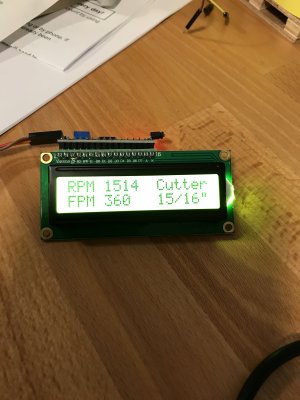I have a theremin that uses two US sensors that can differentiate movement of about 0.3cm. Off the top of my head, one US sensor, one trigger plate, take ten sets of absolute distance measurements, calculate the difference between closest and farthest, some math gets FPM. Wouldn’t be affected by the ram settings of start, end, or stroke. With some clever code it could calculate extend and retract speeds independently.
start
read distance1
wait time milliseconds
read distance2
if distance1>distance2 measurement is extend
if distance1<distance2 measurement is retract
subtract distance1 from distance2 = distancenet
make distancenet an absolute value
distancenet / time multiplied by conversion factor becomes FPM
display extend and retract values on lcd
this could be a real down-the-rabbit hole idea. Picture a relatively simple device with two dials - cutter diameter, number of flutes. Sensor to measure transverse speed of milling machine table. Sensor to read quill RPM. Some math gets display to show quill RPM, FPM of table, FPM of cutter.
start
read distance1
wait time milliseconds
read distance2
if distance1>distance2 measurement is extend
if distance1<distance2 measurement is retract
subtract distance1 from distance2 = distancenet
make distancenet an absolute value
distancenet / time multiplied by conversion factor becomes FPM
display extend and retract values on lcd
this could be a real down-the-rabbit hole idea. Picture a relatively simple device with two dials - cutter diameter, number of flutes. Sensor to measure transverse speed of milling machine table. Sensor to read quill RPM. Some math gets display to show quill RPM, FPM of table, FPM of cutter.
Last edited:

